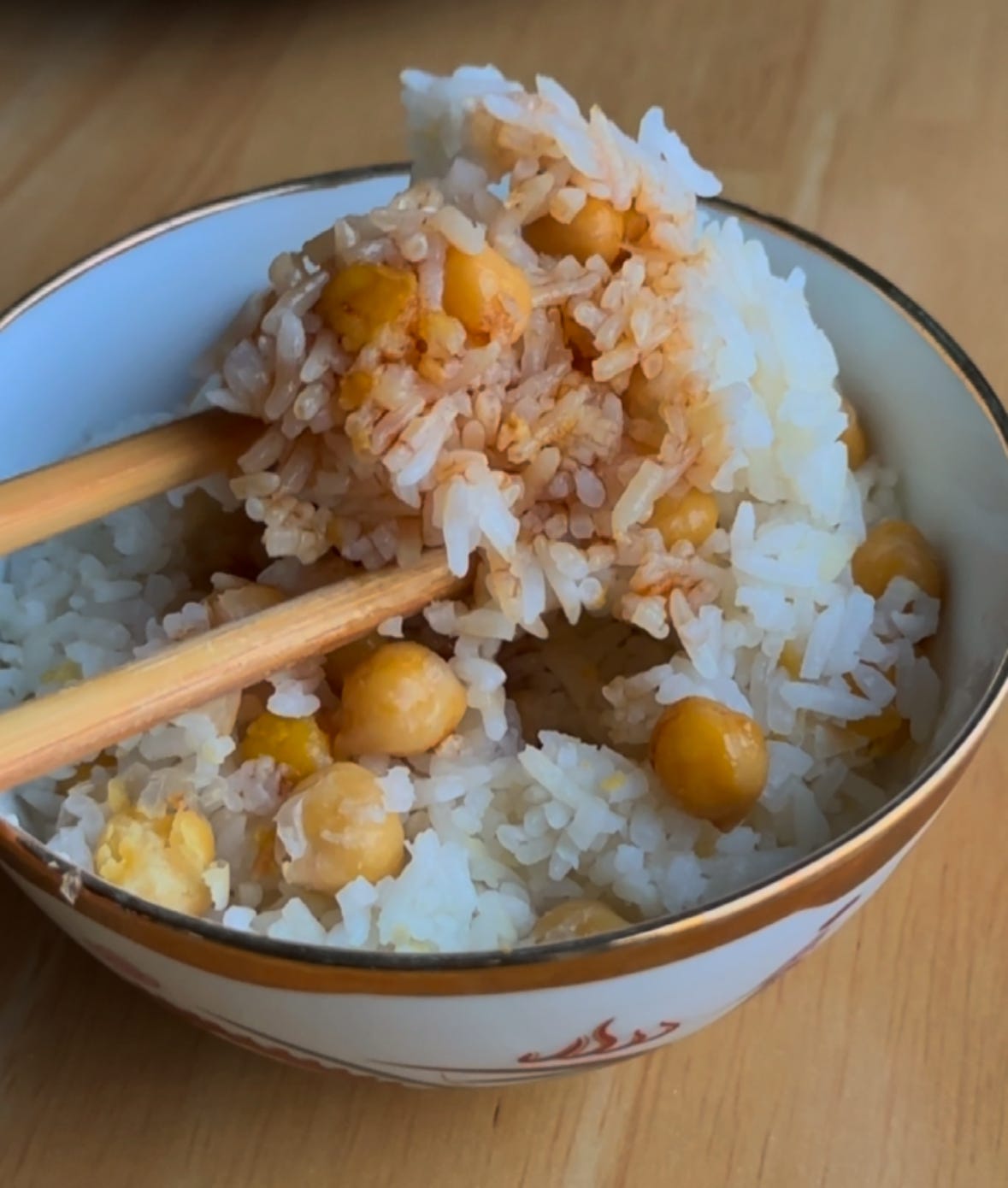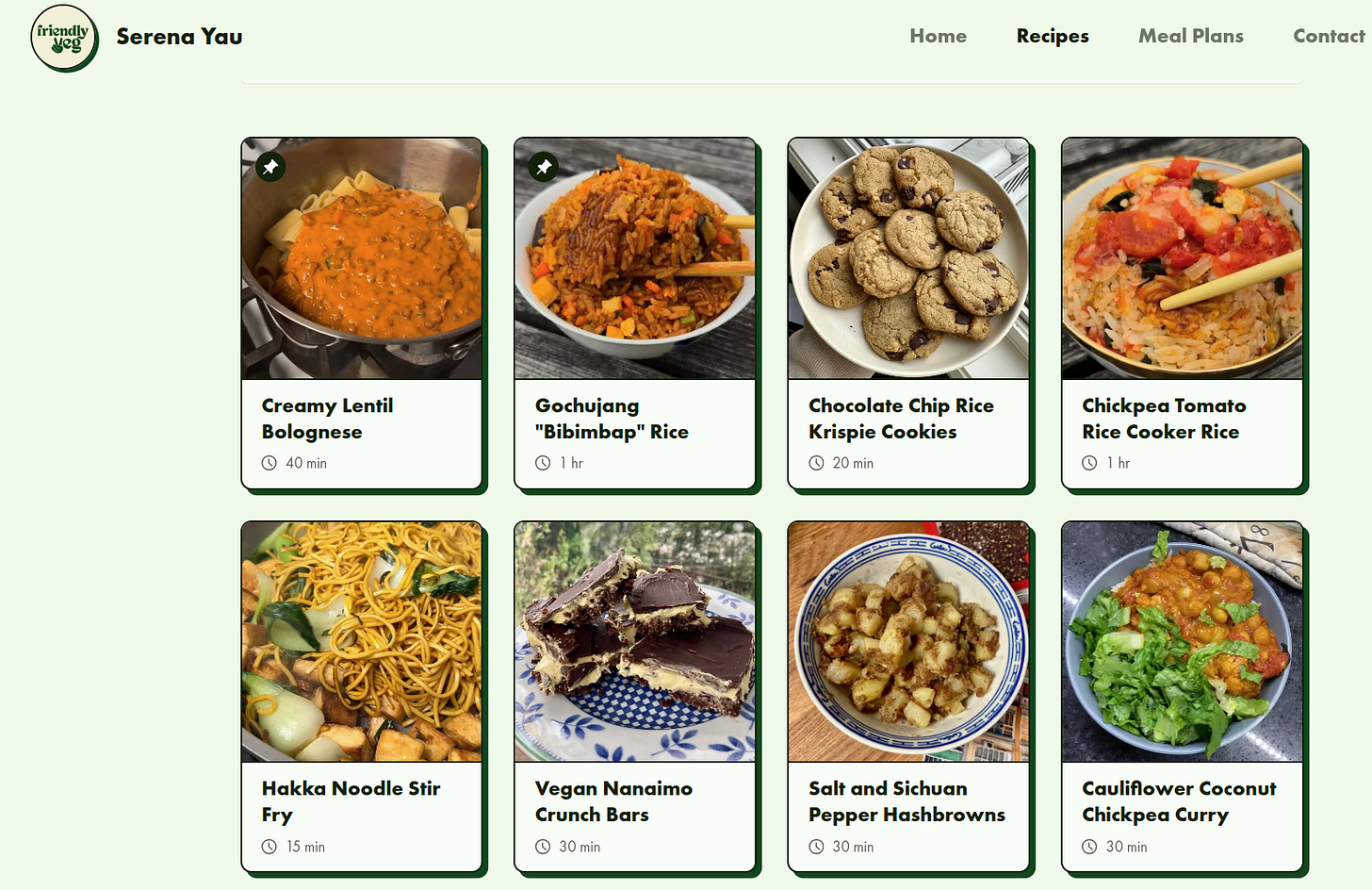Surprising Ways to Use Leftover Rice Water
and a rice cooker tip to get more protein
IN THIS NEWSLETTER:
Inner monologue: Exclusive recipes; How to use leftover rice water
Recipe: Chickpea Protein Rice
Algorithms and virality
If you’ve been reading this newsletter for a while, you’ve probably noticed a theme: I often mention I’m feeling aimless about my social media journey: unsure about how to monetize, unsure as to why some are videos are doing well, unsure as to why some videos aren’t doing well.
They say that your best videos are often the ones that took the least effort (who is “they,” you ask? I don’t know. Gurus, I guess). I have found this to be true:
My first viral video took 10 minutes to film and barely any time to edit, and got 2M views. My second viral video was also my first rice cooker recipe video, which I did NOT expect to do so well. Last year I tried to break down why I think that video went viral.
Add onto this the fact that a large part of my expertise in machine learning is focused on recommender systems - I used to come up with ranking algorithms for a living. And yet I still don’t fully understand the algorithm!
To be clear, I understand the mechanism of what propels videos to virality from a mathematical perspective, but this doesn’t help as a creator because I’m unable to translate from the math to my editing. It’s like saying I can understand Hakka but can’t speak it (ok but really, I can understand a few words and phrases based on context. I hope you get the anology).
ANYWAYS! All this to say. This morning I posted a video on Instagram and it has been doing unexpectedly well as measured by views. So it inspired the content of today’s newsletter:
How to use leftover rice water
Nothing, absolutely nothing. This is what most people do, often myself included, but I’m trying to get better at it.
Use it to water your plants! This is what I showed in the video I mentioned above. Rice water contains nutrient and bacteria that support plant growth.
Use it on your hair. Store it in a jar, let it ferment for a day or so. When you shower, pour it over your head after shampooing, before conditioner. Apparently it helps make your hair strong. I do this sometimes.
Use it on your skin. It works are a toner / essence, essentially as a way to add moisture to your skin.
Want more recipes?
If you want more vegan recipes to show off to your friends (Chocolate Chip Rice Krispie Cookies), mimic your favourite foods (Vegan ‘Salmon’ Tofu) or nourish you on a lazy day (Creamy Lentil Bolognese) then check out my recipe website at friendlyveg.com.
I add recipes every week, so you can think of it like a cookbook that’s ever increasing. It’s $5 per month. I currently have 13 subscribers (if you are one of them, thank you so much!!). I would love to add more and hit my goal of $100 in recurring monthly revenue. If you like my content and would like to support me in exchange for an ever-growing list of recipes, with meal plans (I’ve filmed 3 weeks’ worth of meal plans but need to upload still) then please subscribe! Again, it’s friendlyveg.com).
^ A screenshot of friendlyveg.com. There are currently 46 recipes on there, and I’m always adding more!
If you forget to eat protein sometimes like me, then consider adding cooked chickpeas to your rice! (Ok but real talk, all food contains some level of protein, what I mean here is sometimes I forget to eat overt sources of protein. I could eat just rice and veggies all day).
I usually do 2:1 part rice to chickpeas. Sometimes more, sometimes less. I think this should work with any cooked bean.
Red or brown lentils work too, but I like using cooked chickpeas as they do not interfere with the cooking process of the rice. If you use uncooked beans then they will soak up water as part of their cooking, which means you’d need to add more water overall.
Chickpea Protein Rice
Serves: 4-6
Prep time: 5 minutes
Cook time: 60 minutes (the rice cooker does the work)
Tools:
A rice cooker (any kind works)
Ingredients
1 1/2 cups rice, washed
1 1/2 cups water, or enough such that it goes up to your first knuckle
3/4 cup cooked chickpeas
Method
Wash your rice a few times, or until the water comes out clear. Use the leftover rice water to water your plants, for your skin, or for your hair, or you know, for nothing. It’s up to you!
Add water, such that the amount of water goes up to your first knuckle. The water trick! Or if you have a rice cooker with lines on the bowl, then this means that if you add 2 cups of rice then the water should go up to the line that says “2” etc. Use the cup that came with your rice cooker.
Add your cooked chickpeas.
Cook your rice, and that’s it. Done!
Link to printer version.
Why use cooked chickpeas? If you use dry chickpeas, then the chickpeas will take away some of the water from the rice. So you’d need to add more water. But also, you should be soaking and cooking your chickpeas separately. I like soaking my chickpeas with a bit of baking soda which helps remove the gas.
Do canned chickpeas work? Absolutely! Just make sure to rinse them first to reduce the gas.
Chickpeas:
Use brown lentils, or red lentils. I prefer red lentils as they suck up less water than brown lentils. If you use brown lentils, then add about 1.25 times the amount of water. Make sure you wash them!
You could also use Textured Vegetable Protein, I imagine. I haven’t tried using TVP this way though, but I think it should work.







